Walk around Košice
I wrote this post in two languages. In English and Slovak language.
I went to this city often. It was because my girlfriend was working in it at the time. After all, Košice is not far from Spišská Nová Ves in which I live. They are less than an hour away by train or car. I preferred to go there by train. I probably liked this mode of transport during my student days and I like to travel like this to this day.
Košice is the capital of eastern Slovakia and at the same time the second largest city in Slovakia. And as such, they have a rich history and that's what attracts me.
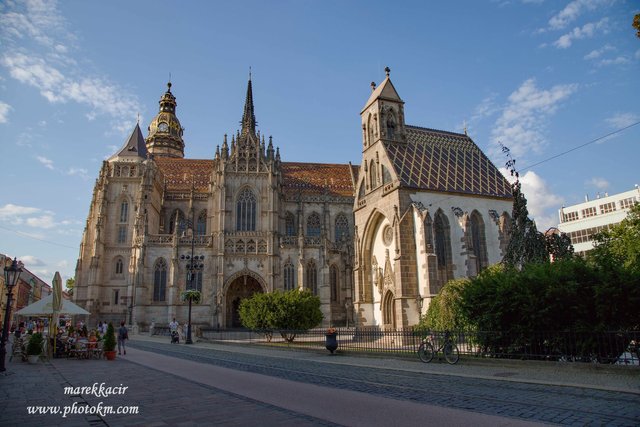
One day I decided to travel to Košice to be with my girlfriend. I have to admit that in addition to wanting to be with her, I had other intentions. I packed my camera and wanted to walk around town and take pictures of everything that interested me.
I get off the train and go to the city center. I'm walking through the park. The local deciduous trees have become popular with crows. They loudly announce their presence to the wider community.
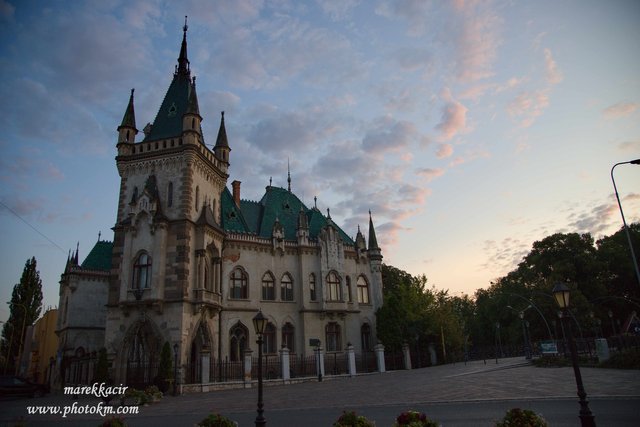
I cross the bridge and Jacob's Palace stands in front of it. This neo-Gothic building, built in 1899, cannot be overlooked. It looks a bit like a house from The Adams family. When they built it, the surroundings looked a little different. The palace stood on the bank of the mill drive, creating a beautiful idyll.
I would consider the Czechoslovak president Edvard Beneš to be the most important inhabitant of the palace. The palace was his residence for a time after the liberation of the city by the Red Army. At present, the palace is used for important social events.
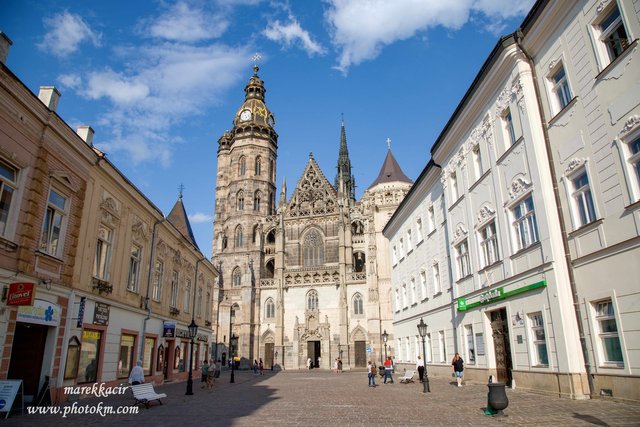
I continue to perhaps the most famous monument in Košice, the St. Elizabeth's Cathedral. This breathtaking cathedral is the largest church in Slovakia. Construction of the Gothic cathedral began at the end of the 14th century. Its predecessor was the church dedicated to St. Michael from the middle of the 11th century. Charter of Pope Martin IV. From 1283, the church is already dedicated to St. Elizabeth. In 1380 the church burned down, which was a good time to build a new one. Medieval Košice prospered, trade and crafts flourished in them, and so the rich townspeople, with the strong support of King Sigismund of Luxembourg and the Pope, gathered to build the church.
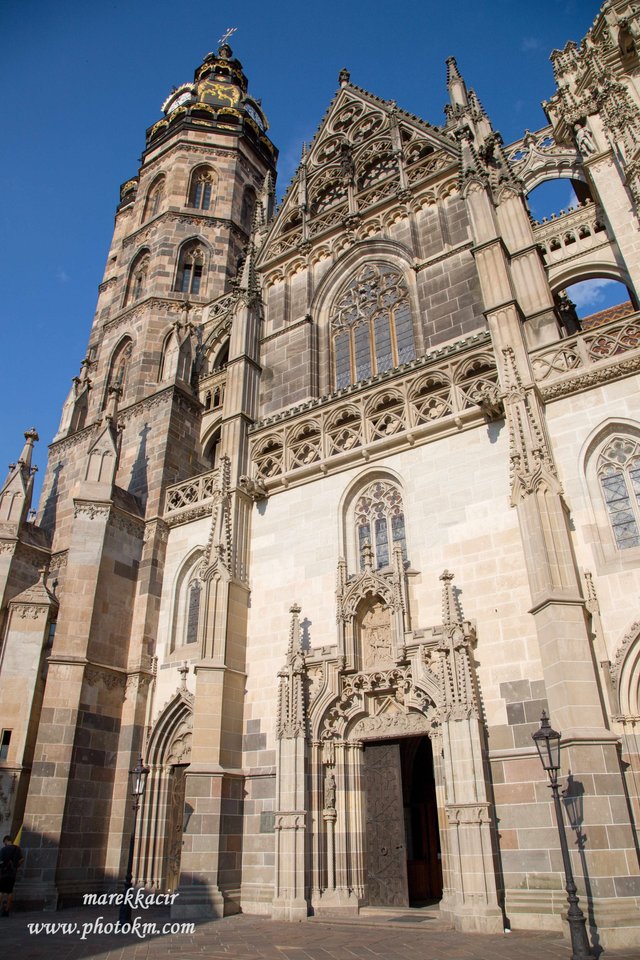
From my layman's point of view, the construction of the sanctuary was very interesting. The old church stood, services were held in it, while a new system of building a new cathedral around the original building was already being built around it. Only when the cathedral was ready for the vault did the old church be demolished.
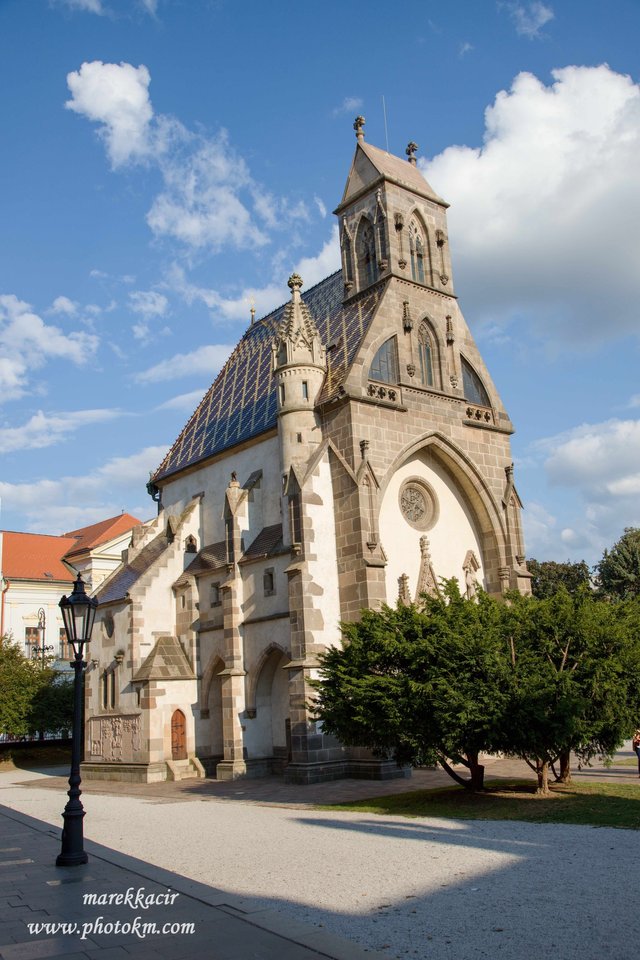
The temporary function of the parish church in the town was taken over by the parallel Church of St. Michael, which was already completed at that time.
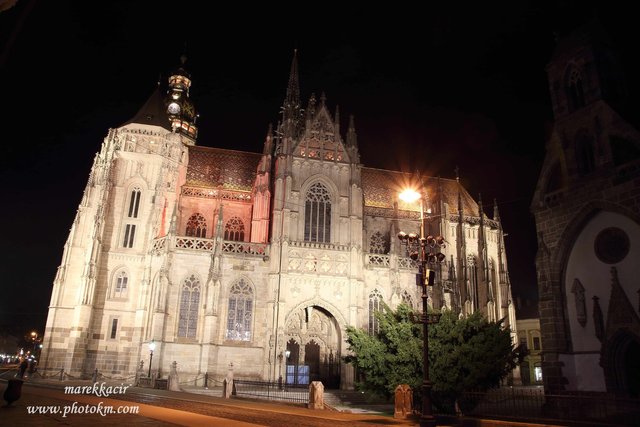
During its existence, the cathedral passed from the hands of Catholics to the hands of Protestants and vice versa. For example, after a fire in 1556, the church fell into the hands of Rotestants. The Catholics and the Jáger Chapter forcibly occupied it in 1604. It was one of the main detonators of the Štefan Bočkaj uprising, which dedicated it to the Calvinists. It was not returned to the Jáger Chapter until Emperor Leopold I in 1671. During the uprising of Imrich Tököli, the cathedral passed back into Protestant hands. They exchanged the Catholic cross on Sigismund's Tower for a gilded rooster. In 1685, the cathedral definitely fell into the hands of Catholics.
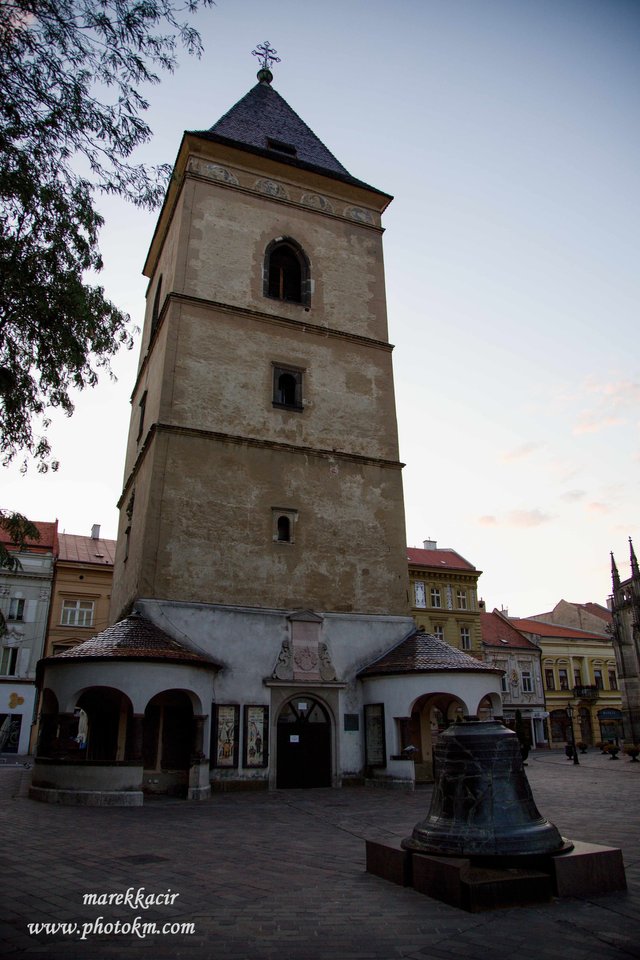
Next to St. Elizabeth's Cathedral is another monument that attracted me. It's Urban's Tower. It was built as a bell tower of the Gothic Dome.
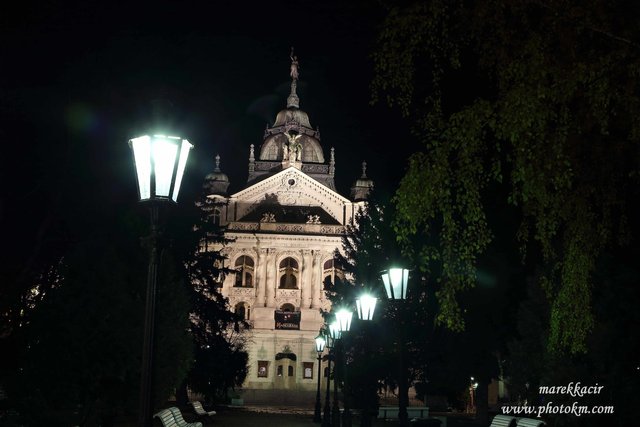
In addition to these buildings, the center of the city center also consists of the theater building in Košice and a park with a fountain. Lots of benches, shading trees and a singing fountain ensure well-being and relaxation in the city center, especially on hot summer days.
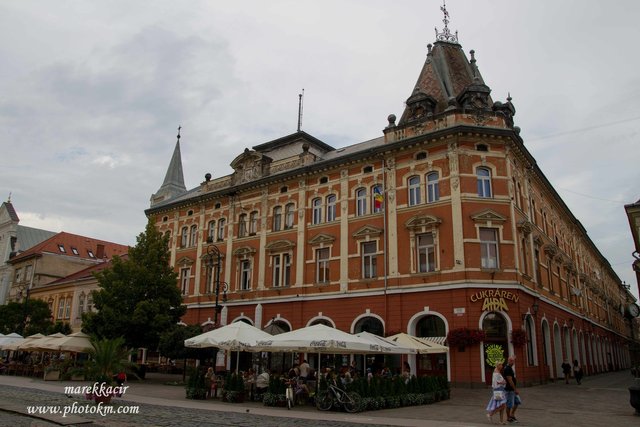
If such cooling is not enough for visitors, they can cool in Aide. It is a local ice cream parlor famous for its excellent ice cream far and wide.
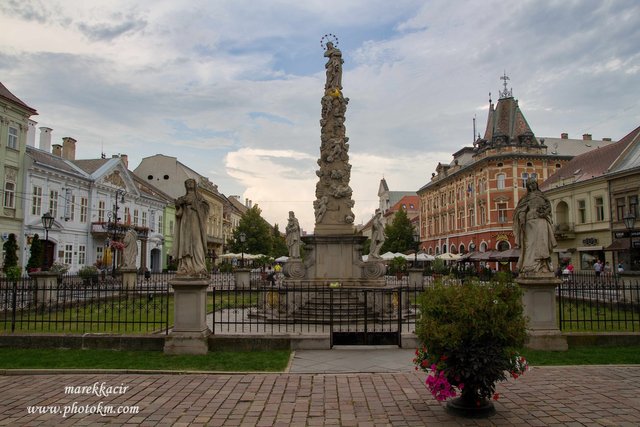
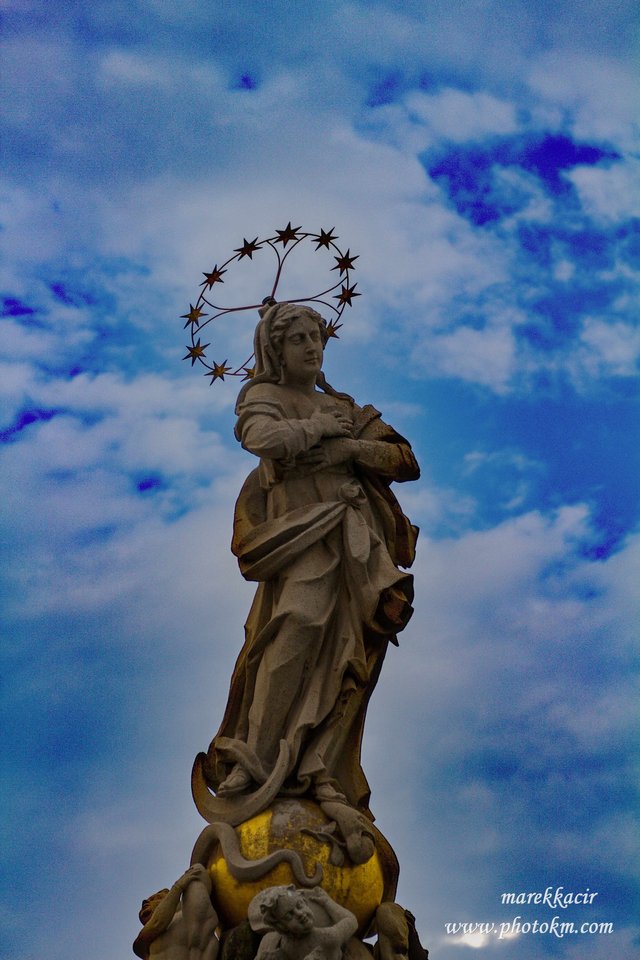
I sit on one of the benches and admire the plague pillar. The statue of the Immaculate Conception is the most beautiful Baroque statue in the city. In the years 1709-1710 there was a plague in Košice. The survivors assembled to build this plague pillar. The Virgin Mary, who is at the top of the sculpture, is to symbolize fidelity, love and goodness, and the city is to protect from misery and suffering.
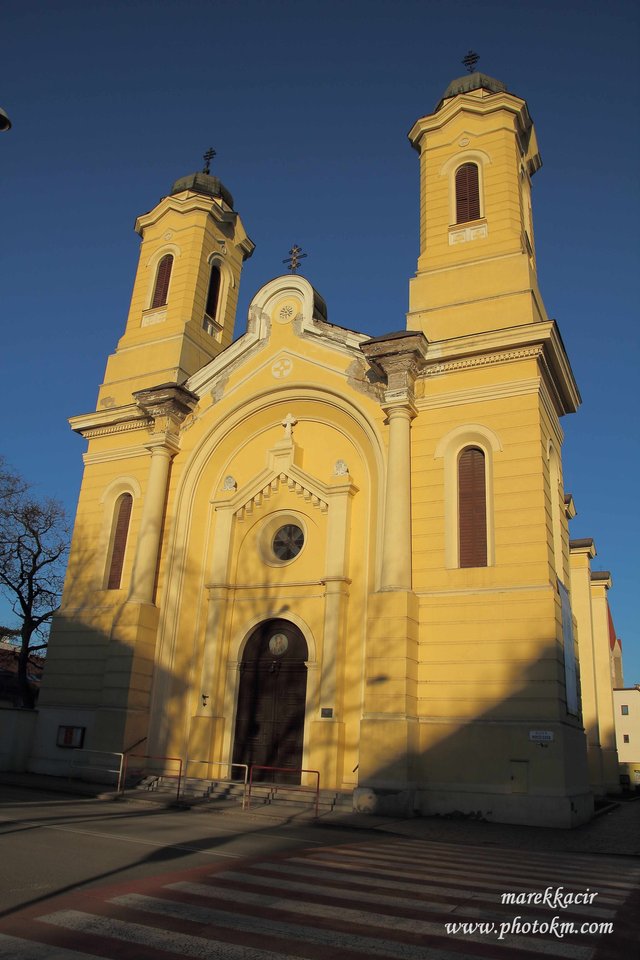
Košice has several churches and several churches are represented in the city. One of them is the Greek Catholic Church and the Greek Catholic Church of the Nativity of the Blessed Virgin. This photo was taken in the early evening when the sun shone so softly on him.
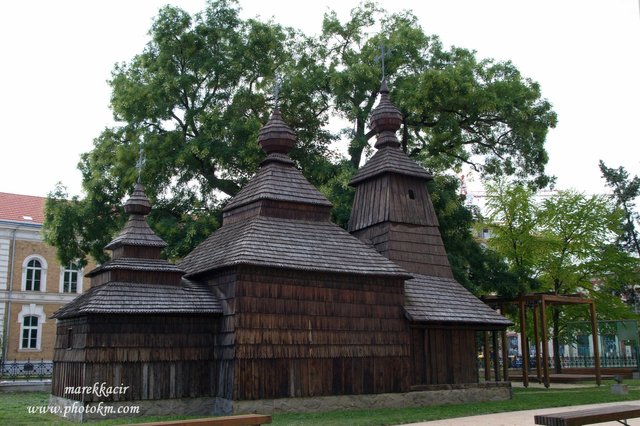
Another Greek Catholic church in Košice is this wooden church of St. Nicholas, which was brought to Košice from the village Kožuchovce. The church was built in 1741. The church was in poor condition and the village wanted to demolish it. Fortunately, it was acquired by the museum and saved the church in this way.
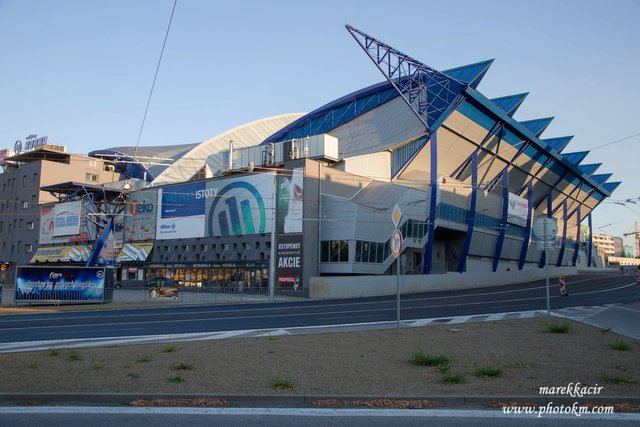
Perhaps the most famous sports ground in Košice is the Steel Arena. In addition to the ice rink, this hockey hall also offers space for artists. The Steel Arena is a popular venue for many bands. I myself have been to several concerts of Slovak and Czech bands such as Kabát, IMT Smile or Lúčnica.
Walking around the city was enough for this time, because my legs were getting really busy. However, that was far from everything from Košice. I plan to prepare at least two more posts about this city. One will concern the history of the city and the other I will return to the monuments that did not fit into this post.
Well thank you.
Do tohto mesta som chodil často. Bolo to z toho dôvodu, že v ňom pracovala v tom čase moja priateľka. Koniec koncov, Košice nie sú ďaleko od Spišskej Novej Vsi v ktorej bývam. Sú vzdialené necelú hodinku vlakom alebo autom. Ja som tam radšej chodil vlakom. Asi som si tento spôsob dopravy obľúbil počas mojich študentských čias a rád takto cestujem dodnes.
Košice sú metropolou východného Slovenska a zároveň druhým najväčším mestom na Slovensku. A ako také majú za sebou bohatú históriu a práve to ma láka.
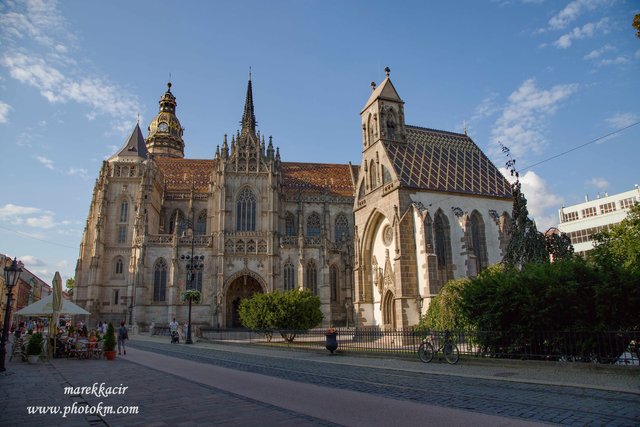
Jedného dňa som sa rozhodol vycestovať do Košíc za priateľkou. Musím sa priznať, že okrem toho, že som chcel byť s ňou, tak som mal aj iné úmysly. Zbalil som si so sebou fotoaparát a chcel som sa prejsť po meste a vyfotografovať všetko, čo ma zaujme.
Vystupujem z vlaku a idem do centra mesta. Prechádzam cez park. Tunajšie listnaté stromy si obľúbili vrany. Hlasno oznamujú širokému okoliu svoju prítomnosť.
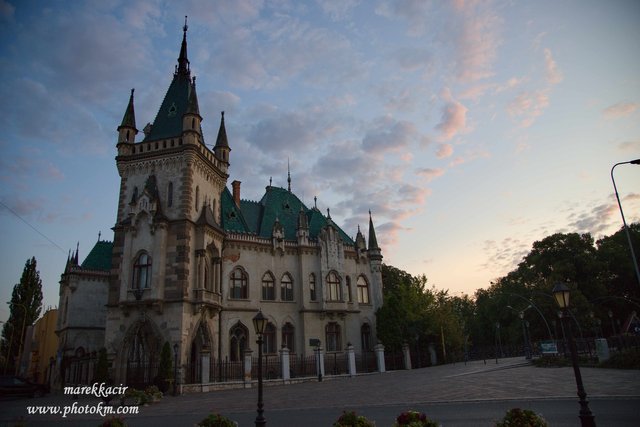
Prechádzam cez most a predomnou stojí Jakabov palác. Táto neogotická budova postavená v roku 1899 sa nedá prehliadnuť. Svojím vzhľadom mi trochu pripomína dom z The Adams family. Keď ju postavili tak okolie vyzeralo trochu inak. Palác stál na brehu mlynského náhonu, vytvárala sa tak nádherná idyla.
Za najvýznamnejšieho obyvateľa paláca by som považoval československého prezidenta Edvarda Beneša. Palác bol istý čas jeho sídlom po oslobodení mesta červenou armádou. V súčasnosti sa palác využíva na významné spoločenské podujatia.
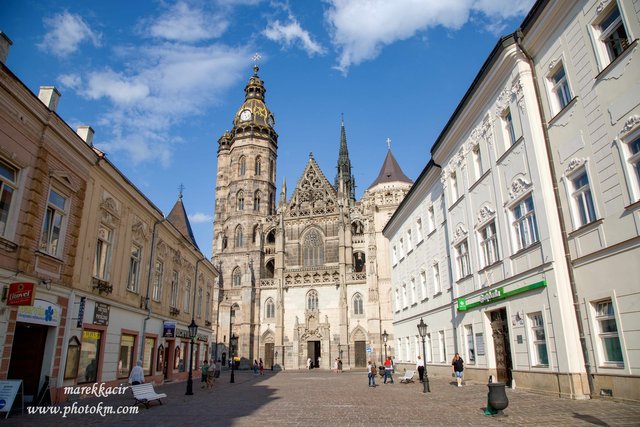
Pokračujem ďalej až k azda najznámejšej pamiatke v Košiciach, k Dómu Svätej Alžbety. Táto úchvatná katedrála je najväčším kostolom na Slovensku. Gotická katedrála sa začala stavať na konci 14. storočia. Jej predchodcom bol kostol zasvätený svätému Michalovi z polovice 11. storočia. Listina pápeža Martina IV. Z roku 1283 už kostol uvádza ako zasvätený svätej Alžbete. V roku 1380 kostol vyhorel, čo bol vhodný okamih na výstavbu nového. Stredoveké Košice prosperovali, obchod a remeslá v nich prekvitali a tak sa bohatí mešťania za výraznej podpory panovníka Žigmunda Luxemburského a pápeža vyzbierali na výstavbu chrámu.
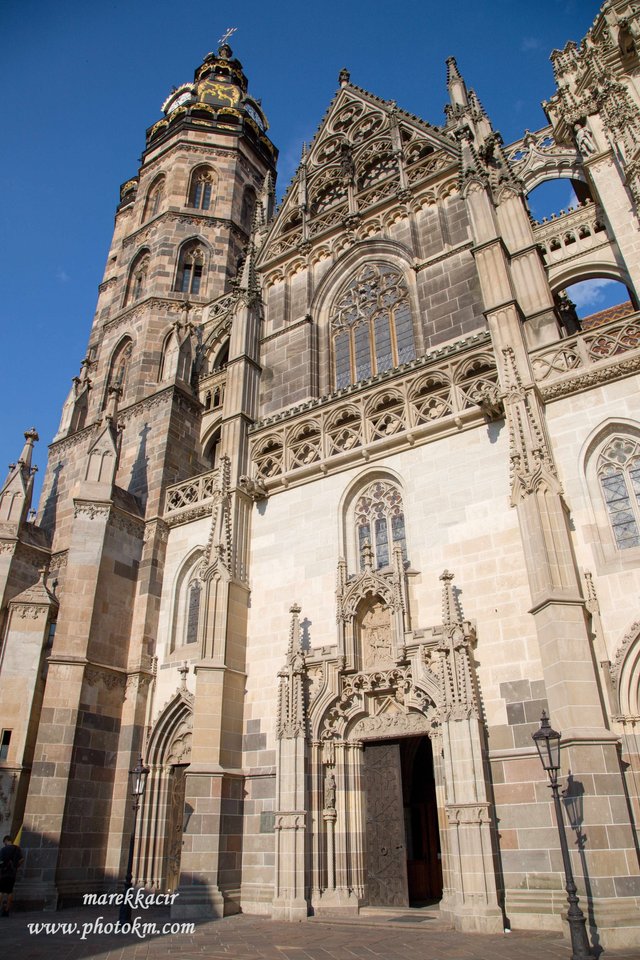
Výstavba svätostánku prebiehala z môjho pohľadu laika veľmi zaujímavo. Starý kostol stál, prebiehali v ňom bohoslužby, zatiaľ čo okolo neho sa už budoval nový systémom obstavania novej katedrály okolo pôvodného objektu. Až keď bola katedrála pripravená na zaklenutie, strhol sa starý kostol.
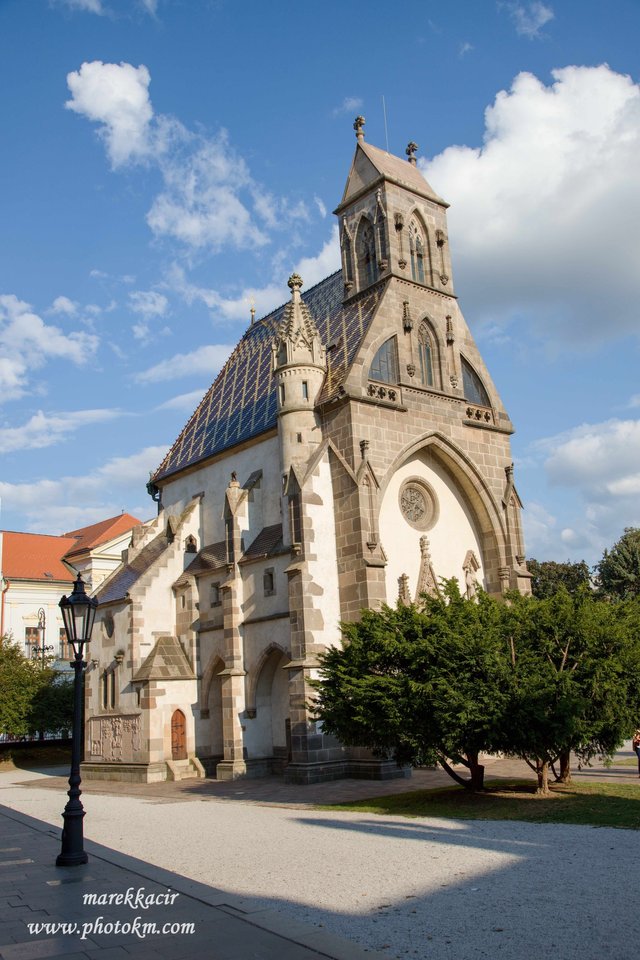
Dočasnú funkciu farského kostola v meste prevzal paralelne vybudovaný Kostol svätého Michala, ktorý bol v tom čase už dokončený.
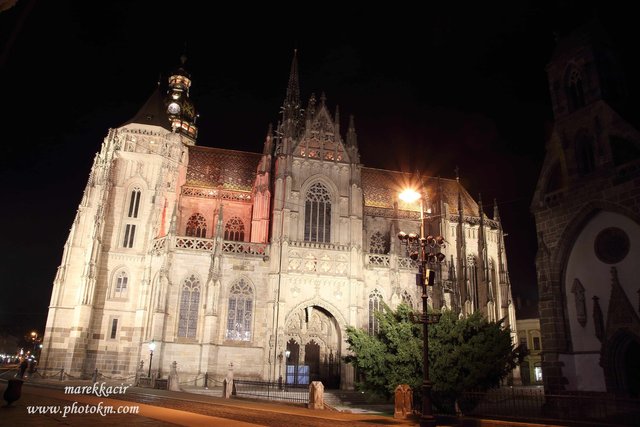
Počas svojej existencie prechádzala katedrála z rúk katolíkov do rúk protestantov a naopak. Tak napríklad po požiari v roku 1556 pripadol kostol do rúk rotestantov. Katolíci a jágerská kapitula ho násilne obsadili v roku 1604. To bola jedna z hlavných rozbušiek povstania Štefana Bočkaja, ktorý ho venoval kalvínom. Jágerskej kapitule ho vrátil až cisár Leopold I. v roku 1671. Počas povstania Imricha Tököliho prešla katedrála opäť do rúk protestantov. Katolícky kríž na Žigmundovej veži vymenili za pozláteného kohúta. V roku 1685 sa dostala katedrála definitívne do rúk katolíkov.
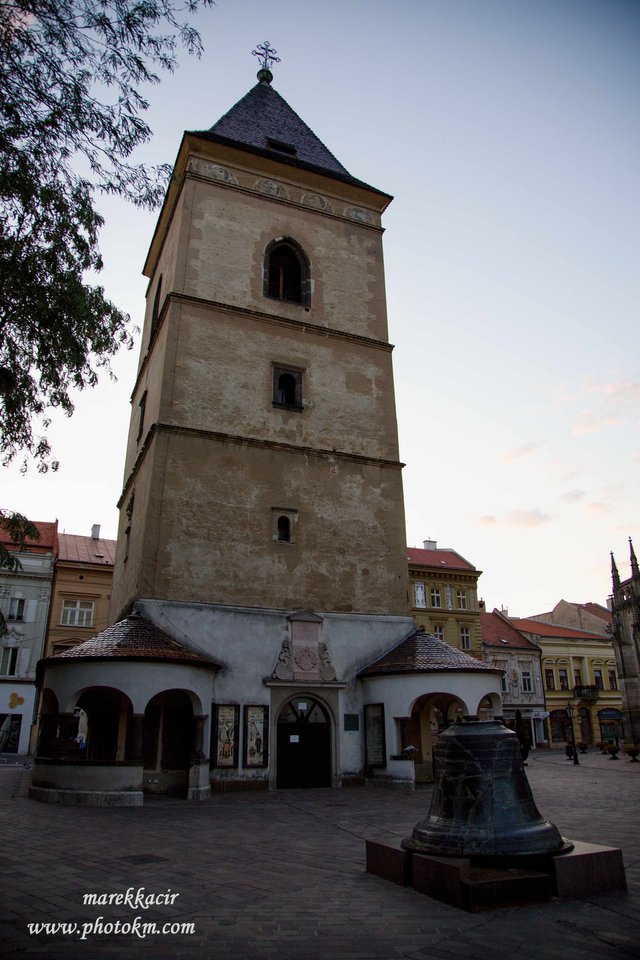
Vedľa Dómu svätej Alžbety sa nachádza ďalšia pamiatka, ktorá ma upútala. Je to Urbanova veža. Tá bola postavená ako zvonica gotického Dómu.
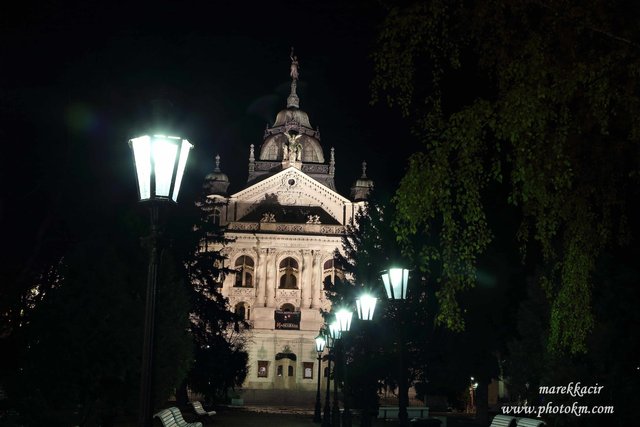
Stred centra mesta okrem týchto budov tvorí ešte budova divadla v Košiciach a park s fontánou. Množstvo lavičiek, stromy vytvárajúce tieň a spievajúca fontána zabezpečujú pohodu a relax v centre mesta hlavne počas horúcich letných dní.
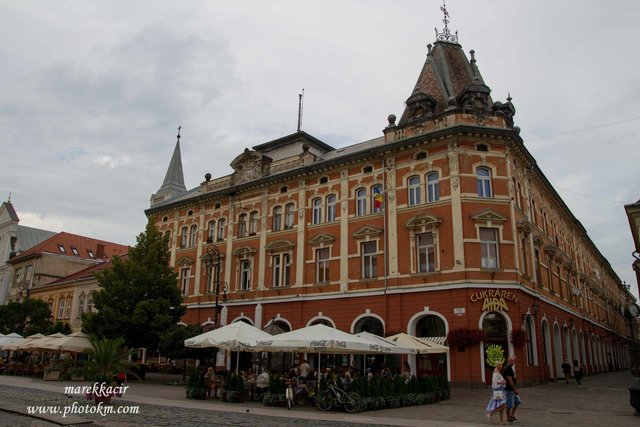
Ak by návštevníkom nestačilo takéto schladenie, môžu sa schladiť v Aide. Je to miestna zmrzlináreň preslávená svojou výbornou zmrzlinou široko ďaleko.
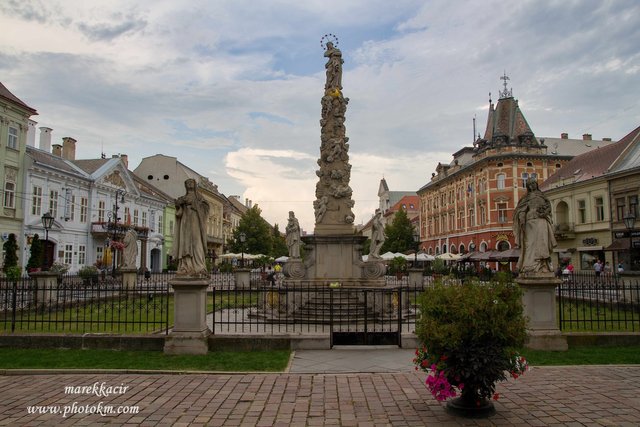
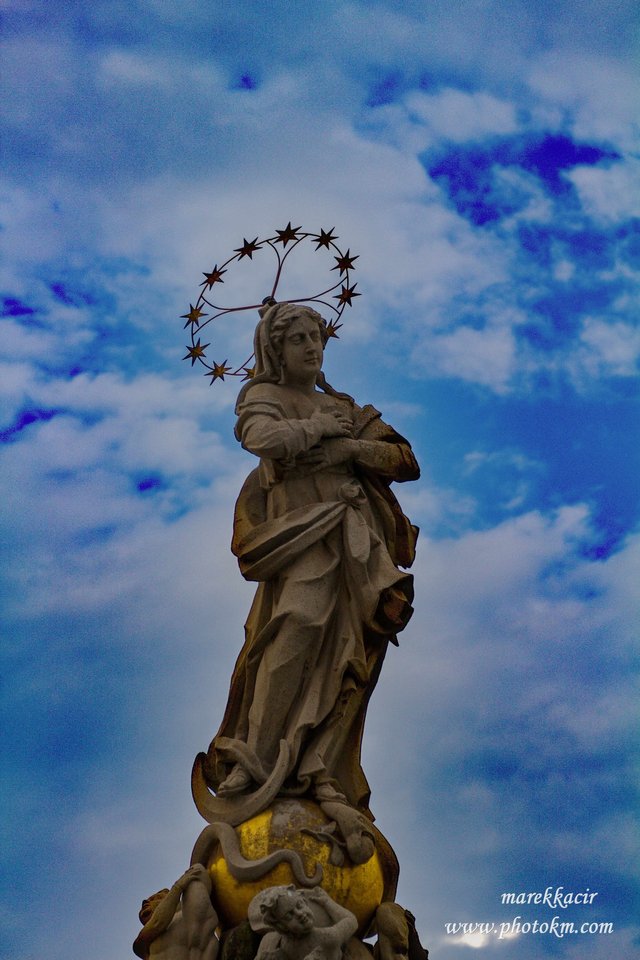
Ja si sadám na jednu z lavičiek a obdivujem morový stĺp. Súsošie Nepoškvrnenej Panny Márie je najkrajšie barokové súsošie v meste. V rokoch 1709-1710 bol v Košiciach mor. Tí čo prežili sa poskladali na výstavbu tohto morového stĺpa. Panna Mária, ktorá je na vrchu súsošia, má symbolizovať vernosť, lásku a dobrotu a mesto má chrániť pred biedou a utrpením.
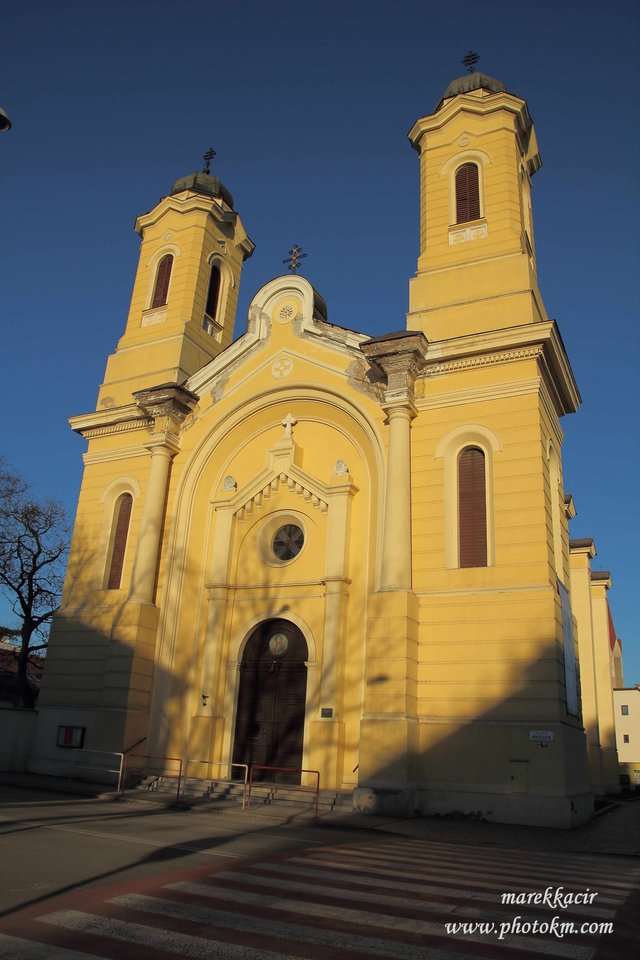
Košice majú viacero chrámov a zastúpenie v meste má viacero cirkví. Jenou z nich je aj Greckokatolícka cirkev a Gréckokatolícky chrám Narodenia Presvätej Bohorodičky. Táto fotografia vznikla v podvečer kedy na neho slnko takto pekne jemno svietilo.
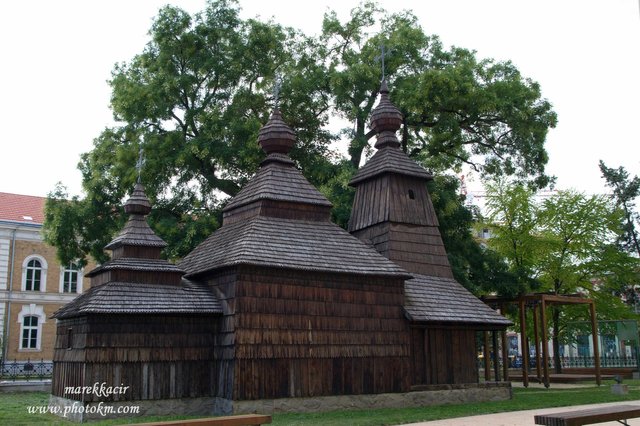
Ďalším gréckokatolíckym chrámom v Košiciach je aj tento drevený kostolík svätého Mikuláša, ktorý bol do Košíc dovezený z obci Kožuchovce.Kostolík postavili v roku 1741. Kostolík bol v zlom stave a obec ho chcela zbúrať. Našťastie ho získalo múzeum a kostolík takto zachránilo.
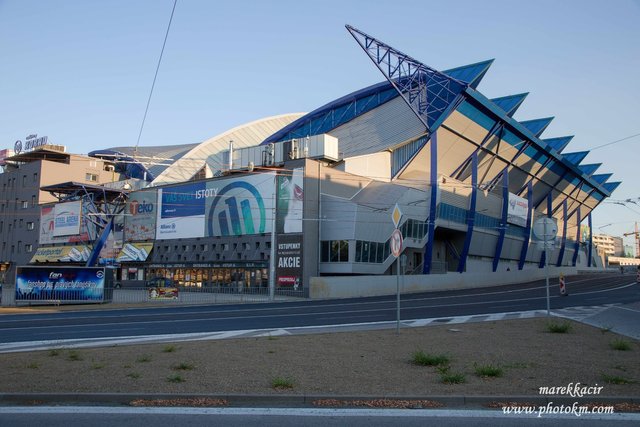
Azda najznámejším športoviskom v Košiciach je Steel aréna. Táto hokejová hala ponúka okrem zimného štadióna aj priestor pre umelcov. Steel aréna je obľúbeným miestom na koncertovanie mnohých kapiel. Sám som v nej bol na viacerých koncertoch slovenských a českých kapiel ako napríklad Kabát, IMT Smile, či Lúčnica.
Prechádzania po meste už bolo pre tentokrát dosť, veď aj moje nohy už dostali poriadne zabrať. Z Košíc to však ani zďaleka nebolo všetko.Plánujem pre vás pripraviť ešte minimálne dva príspevky o tomto meste. Jeden sa bude týkať histórie mesta a druhom sa vrátim k pamiatkam, ktoré sa mi do tohto príspevku nevmestili.
Ďakujem.
Congratulations @photoparadise! You received the biggest smile and some love from TravelFeed! Keep up the amazing blog. 😍 Your post was also chosen as top pick of the day and is now featured on the TravelFeed.io front page.
Thanks for using TravelFeed!
@smeralda (TravelFeed team)
PS: TravelFeed is in social media to reach more people, follow us on Facebook, Instagram, and Twitter.